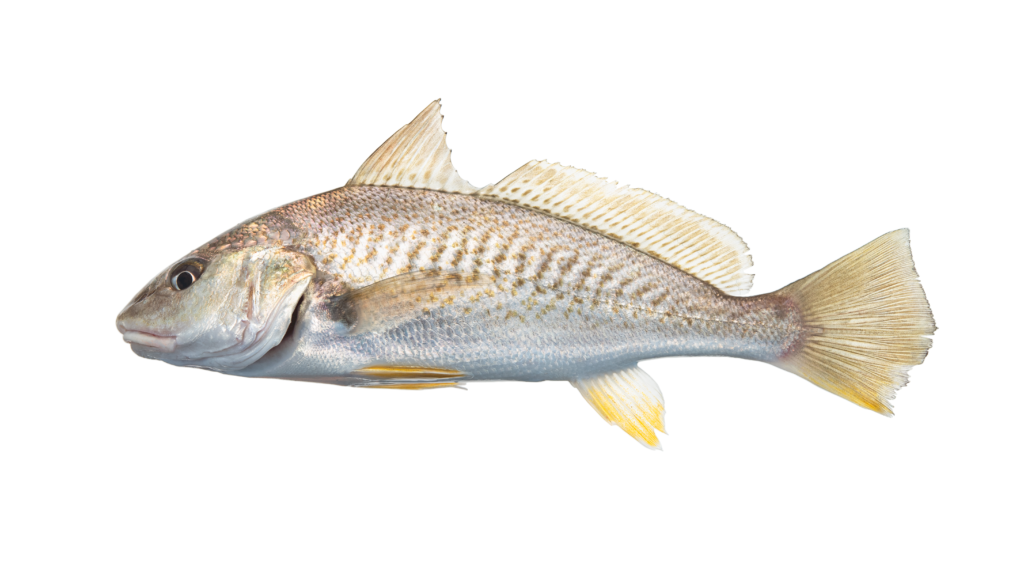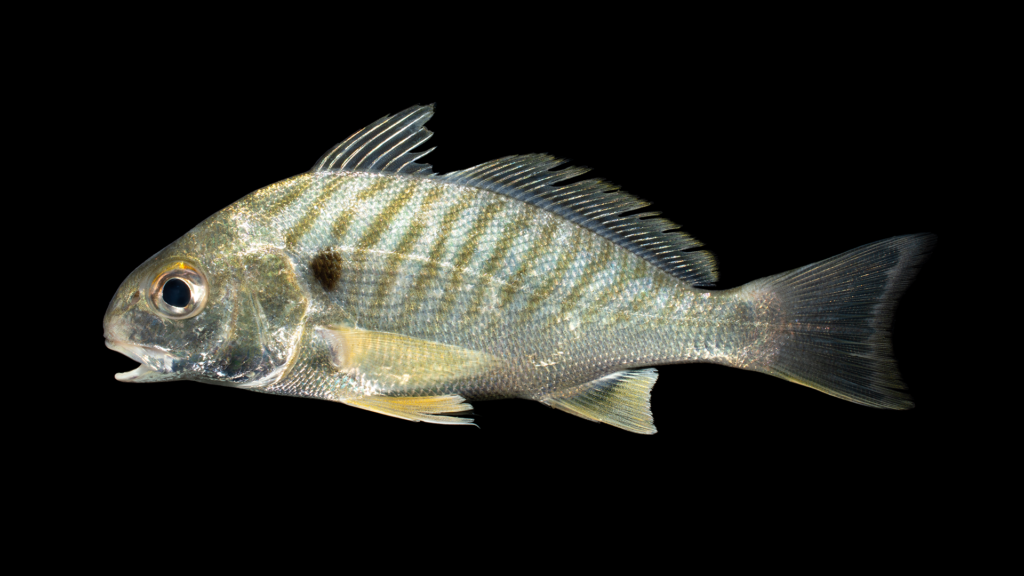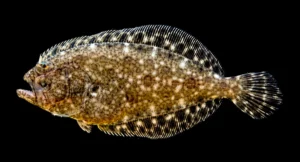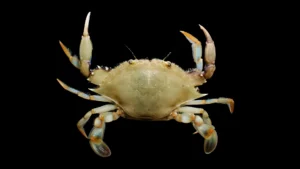Waters for Wildlife: Why Top Fish Species on the NC Coast Are Facing a Drastic Decline

In recent years, the picturesque North Carolina coast has been grappling with a perplexing problem: the alarming decline of some of its most iconic fish species. From spot to weakfish to Blue Crab, these aquatic treasures have long been a source of pride for local anglers and a vital component of the region’s thriving ecosystem. But now, they are gradually disappearing from our waters, leaving the future of these species as well as our ability to fish for them in question. As part of our focus on “Waters for Wildlife,” we’re diving into why this is happening. To do that, we sat down with NC Wildlife Federation Senior Marine Scientist Louis Daniel to help unravel this drastic decline.
Q: Are there declining fish species along the North Carolina coast?
A: Yes there are, unfortunately. I would say that based on stock assessments done by federal agencies as well as the NC Division of Marine Fisheries, many of our species are overfished and/or classified as overfishing. Some have declined to the point of collapse. But for certain, there are numerous species that are declining or overfished along the North Carolina coast.
Q: What would you say are the primary declining species?
A: That’s kind of a tough question because some of these species have declined so much that they’re not still declining. They may be just at extremely low levels of abundance. But I would probably say weakfish (also known as gray trout), Atlantic croaker, spot, southern flounder, blue crab, and striped mullet.
Q: How would their decline be noticeable to regular people or recreational fishermen just going to the coast to fish?
A: In terms of regular people, folks that aren’t on the water that don’t see it on any kind of regular basis, they probably wouldn’t know, and that’s part of the problem. We can’t see under the surface of the sounds, which means that we can’t see when there’s a lot of fish, and we can’t see when there’s not many fish at all. So, we only get reports back from the folks that are actually going out and trying to catch those fish. And those typically are your recreational and commercial fishermen.
It may also be reflected though to the general public in prices at the market. When fish are extremely abundant, their prices might go down. Whereas if there’s a high demand and low abundance, then prices are going to go up. I don’t think many people that buy seafood can say that prices are going down.
With the recreational fishery though, if you’re going out to catch fish, some species have bag and size limits. One of the telltale signs of a declining fish stock is when the bag limits, the allowable harvest in the recreational fishery, begin to drop off dramatically. For weakfish, the bag limit has gone down from 10 fish per person down to 1 per person. For southern flounder, the bag limit has gone from 10 fish per person to 1 fish per person for about a three-week season.
So that’s how the recreational fishermen might see. If you compare our bag limits, our recreational bag limits, to other states with the same species, our bag limits are much less than the bag limits that are allowed in, for example, South Carolina, Georgia, and Florida. So, one might presume, and I think correctly presume, that the status of the stock in North Carolina is not the same as the stock conditions in other states, which is not a good sign.
The other way that we can determine if the declines are noticeable is just simply in looking at the landings or the amount of fish caught. In many instances, landings are representative of what’s going on in the fishery. Now, sometimes that’s not the case. If demand drops or if there’s a scare. For example, when we had a mercury scare in King Mackerel, the landings declined a little bit. But when we see stocks that are declined by 70%, 80%, or 90% from their longtime historic highs, and we know that the demand is extraordinarily high, and the fact that fishermen are going out and looking for those fish but not finding them, that should give a reason for concern.
Q: Who regulates these fish populations?
A: That’s one of the difficulties of fisheries management. Many of these fish don’t abide by any jurisdictional boundaries. We have some species that travel all over the world’s oceans. We have other species that travel up and down the coast from Maine to Florida, or in between. And then we have those species that are the responsibility exclusively of the state of North Carolina because they occur primarily in our estuary waters and nearshore coastal ocean and don’t really stray north or south.
Many of the species that the state is responsible for managing are declining, have declined to a point of collapsed, or are closed by moratorium. Some of those include river herring and striped bass.
Other populations, such as spot, croaker, and weakfish are managed by the Atlantic States Marine Fisheries Commission (ASMFC). There’s a coastwide fishery management plan for weakfish, but that plan often doesn’t actually address the issues specific to North Carolina.
Q: Many people may not be familiar with the terms overfished, depleted, collapsing, and collapsed. What do those terms mean, and what’s the difference between them?
A: The terms that we want to see associated with fish species are viable, sustainable, and healthy. Unfortunately, those terms are extremely rare in the fisheries management lexicon in North Carolina.
Overfished
What we see too often is overfished, which means that a stock’s biomass has fallen below a prescribed number that is deemed healthy. So, if the population biomass falls below a certain threshold, it’s considered to be overfished.
The process of causing that decline or the activity that causes the decline of stock biomass to an overfished condition is called overfishing. Overfishing is caused by the impacts of the commercial harvest, commercial discards, recreational harvest, and recreational discards.
Then there are other sources of mortality that are considered more natural, such as predation and in some instances, water quality and habitat issues. What we have control over is fishing mortality, so that’s what we’re trying to address.
What we know from history is that if we address the overfishing situation, oftentimes, the stocks respond positively whether there are water quality or habitat problems or not. That’s not to say that water quality and habitat are not critical components, they are. But likely one of the most fixable issues that we can address is overfishing.
Collapsed and Collapsing
Terms like collapsed and collapsing are a little bit up for debate. The literature tends to suggest that if the landings of fish fall below 10% of what they were during peak fisheries, they are collapsed. For example, if we averaged landing 1 million pounds of spot during their heyday, and now we’re landing less than 100,000 pounds, that’s less than 10% of the historical highs. Collapsed is just about as bad as it gets before a species is gone.
Just like overfishing leads to being overfished, collapsing leads to being collapsed. When I use the term collapsing, I’m talking about a stock that’s at 25% or less of historical high landings.
In North Carolina, based on the definitions in the literature, many of the species that we’re concerned about, such as spot, Atlantic croaker, and weakfish are collapsed. Others like blue crab and potentially striped mullet are collapsing.

Table 1 provides the top three years of commercial landings from the NC online database compared to the lowest landings in the time series (1972-2021). The lowest landings have all occurred within the last 5 years. The overall commercial harvest of these 5 principle species has declined 88% from the peaks.

Table 2 provides the top three years of recreational landings from the NOAA Fisheries Service online database compared to the lowest landings in the time series (1981-2021). The lowest landings have all occurred within the last 5 years. The overall recreational harvest of these 4 principle species has declined 90% from the peaks.
Q: Let’s look at each of these species individually. What is the current status of each, what’s causing its decline, and what’s being done to stop it?
A: While all of these species are different, when it comes to what is causing their decline, they share some very important similarities.
Atlantic croaker

Atlantic croaker (Photo credit: NCFishes.com)
When we look at Atlantic croaker, we see a stock where North Carolina historically landed 20 plus million pounds a year in the commercial fishery, and now it’s less than 1 million pounds a year. That’s a stock that used to be considered an extremely abundant species. There was no way we could ever overfish them because they were so abundant. It was very popular with the recreational bottom fishing crowd and very popular on the coastal fishing piers. Now those landings have gone away to virtually nothing.
It also doesn’t help that Atlantic croaker is part of the bycatch – or unintended catch – in the inshore shrimp trawl fishery. These inshore waters or estuaries are important because many marine creatures rely on them for food, as spawning grounds, and as a place of refuge for their young to grow to maturity. The data shows that bycatch is the leading cause of mortality of Atlantic croaker on a coastwide basis.
So, what’s being done to stop that? For the most part, nothing. The most recent shrimp management plan basically continued status quo and failed to address concerns about shrimp trawl bycatch.
As far as overfishing goes, the ASMFC, which is responsible for managing the coastwide stock, has taken very little meaningful action. There’s now a bag limit of 50, which is extraordinarily high, and there’s a one-month closure during a time when the fishery is at its lowest point. So, there are very few restrictions on Atlantic croaker. There are no size limits and there are no trip limits on the commercial fishery. It’s really a free for all in terms of Atlantic croaker with just minor exceptions.
Spot

Spot (Photo Credit: NCFishes.com)
Spot is similar to Atlantic croaker. The primary cause of spot mortality is as bycatch in the shrimp trawl fishery. In addition, that was a highly sought after commercial and recreational fish, but now, very few are harvested. In fact, if we look at the sizes of the spot and croaker that are being caught in North Carolina, the vast majority of those fish are juveniles. Fish that have not had a chance to spawn and replace themselves, which is what’s required in order to rebuild a fish stock. It’s confounding to me that there seems to be this negative reaction to putting in size limits to allow fish to spawn at least one time.
Weakfish

Weakfish (Photo Credit: NCFishes.com)
The situation surrounding weakfish is very difficult. Weakfish was an extremely important recreational fishery for the New England and mid-Atlantic states. Virginia, New Jersey, and Massachusetts all had very, very robust weakfish fisheries back in the 1970s and 1980s that disappeared in the 90s. Many believe that the uncontrolled fisheries in the winter off the North Carolina coast coupled with the shrimp trawl bycatch contributed significantly to the decline of this species. Those factors added to natural mortality caused the stocks to decline to an extremely low level that resulted in some pretty significant restrictions in the 2000s.
Today, that fishery is restricted to a 100-pound bycatch allowance in the commercial fishery and a one-fish bag limit in the recreational fishery. They’re persisting at an extremely low level, yet they still make up a significant portion of the shrimp trawl bycatch. That’s important because much of the recruitment that we’re getting of weakfish into the estuaries is being lost to the bycatch in the shrimp trawl fishery.
Southern flounder

Southern flounder (Photo Credit: NCFishes.com)
We’ve seen a similar situation occur with southern flounder as we have with many others. We’ve never really had any meaningful fishery management plan for southern flounder until recently. As the commercial fishery was restricted and not as much flounder was caught, the amount caught in the recreational fishery increased. So, we’ve seen a lot of moves back and forth between who’s catching more fish recently.
Historically though, southern flounder was a commercial fishery. But, there wasn’t a size limit to protect the adult spawning females and there was no limit on the amount of fish that the commercial fishery could harvest. The commercial fishery is now relegated to a quota that provides about a one-month season out of the year compared to being able to fish year-round like they did previously.
The recreational fishery’s once extremely liberal bag limits have also now been constrained down to very low levels. It has also been restricted by a quota that permits about a three- or four-week season with a one-fish bag limit.
While those are steps in the right direction, we’ve also failed to take into consideration discards and unreported catches in the fishery for southern flounder and many of these fisheries. Discards are the portion of a catch that is not kept and that is returned to the water – often dead or dying. We don’t have good stock assessments for those, but we do know that the numbers are high.
Blue crab

Blue crab (Photo Credit: NCFishes)
With the blue crab fishery, it’s another consistent pattern of failing to take necessary action. We’ve known for decades that we needed pot limits. We’ve known for decades that we needed to protect the pregnant female crabs. But we haven’t done that. We’ve nibbled around the edges on all these species with management trying to avoid upsetting anyone. The end result has been collapsed or collapsing fisheries.
The biggest and most valuable fishery in North Carolina, the blue crab fishery, is on the verge of collapsing, if not collapsed. Where we used to land 50-60 million pounds, we’re now down to landing 10-15 million pounds.
We’re the only state with no pot limit. You can fish as many crab pots as you want, and you can catch as many crabs as you want, as long as you do it outside of the very small window when the fishery is closed.
Striped mullet

Striped mullet (Photo Credit: NCFishes.com)
Here’s another species that we’ve never properly managed. We have no size limit. We have no bag limit to speak of. I mean, we have a 200-fish limit for mullet that’s to be used as bait for the recreational fishery, but that’s it.
Striped mullet is a fishery that we used to concentrate on in the fall when the fish were migrating and heading out of the inlets and going into the ocean to spawn. That’s when we targeted those fish. Now though, we’re targeting them year-round, and they are classified as overfishing.
If you had told folks 20 years ago that they’d be fishing for mullet, they’d say, “No way.” But now, we’re fishing down the food chain. We’ve gone from the larger predatory fishes and the larger things like weakfish because they’re gone. Now, we’re fishing for these lower trophic level species like striped mullet, and the same thing is happening to them.
Q: Can these species be rebuilt?
A: They can absolutely be rebuilt. We’ve still got some left, so we can rebuild them. But, it’s going to take a concerted effort by everybody, and we’re going to have to deal with the overfishing problems – both commercially and recreationally. In addition, we need to address the elephant in the room. The one thing that seems to have the greatest impact on many of these species in terms of numbers. That’s the impact of the inshore shrimp trawl fishery on the nursery grounds for these creatures.
I think if we can address that issue, and we can mitigate those mortalities, then we’re going to almost immediately see an increase in these fish populations. In turn, that’s going to immediately provide opportunities for the recreational and commercial fisheries.
For more information about this topic, read our article on North Carolina’s Collapsing & Collapsed Coastal Fisheries Resources: Impact of State Management Under the Fisheries Reform Act of 1997.

